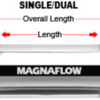Being of grey hair etc. and being an engineer ...
I remember those "Muscle Car" days with the engine ratings quite well.
Before 1972, most American engines were rated using Society of American Engineers (SAE) standards J245 and J1995, which calculated the output of a 'bare' engine on a test stand with no accessories, optimal ignition timing, free-flowing exhaust headers (no mufflers), with a correction factor for standard atmospheric conditions. That is to say SAE "Gross".
Starting in 1971, manufacturers adopted the SAE net rating methodology, described by SAE standard J1349. "Net" horsepower ratings are still made with the engine on a test stand, but with stock ignition timing, carburetion, exhaust, and accessories -- in short, a closer approximation of how much power an engine produces as actually installed in the car.
The result of the new rating system was a dramatic
drop in
advertised power for the same engine type.
So, those 1971, and early 1972 stock engines NEVER really made the practical power claimed. Also, it is inaccurate to compare them to the 1973 an 1974 engines based on advertised HP.
As stated earlier in this post, DeTomaso, as well as Ferrari, Maserati et al. were notorious for inflating the power their cars made in the day (70's).
I strongly doubt any of the stock 351C engines made over 300hp SAE NET in our DeTomasos ... even with an Edelbrock dual plane intake manifold, Holley carb, and headers.
The bottom line is ... Enjoy the the car! It handles and accelerates fantastically. And remember, all things being equal, HP is for top speed ... How many of us have driven our cars at over 120 mph or ever will ? So, go ahead and claim what ever HP number makes you feel good.

... Hell, my 1974 modified 351C (quench head, suck and blow mods) made 350hp !!!

It doesn't matter if its true ... Its a number that makes me feel good.

B.G.
P.S. Today's engines generate the horsepower advertised. You can count on it. Otherwise, the manufacturers get slapped with a lawsuit ... Ford knows this all too well. When 1999 Mustang Cobra (4.6 DOHC) owners found out that their engines did not make the 320 hp advertised, but, in fact, made less that the 1998 Cobra (4.6 DOHC - Teksid 310hp) engines. The result of the lawsuit was no 2000 4.6 DOHC Cobra and additional modifications to obtain the HP claimed.


